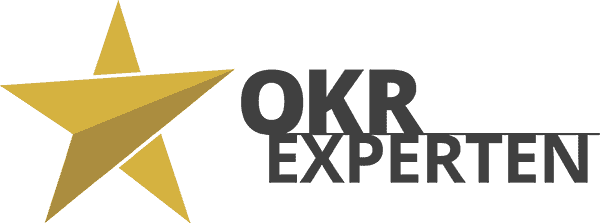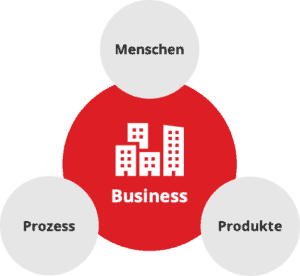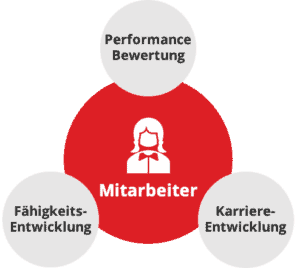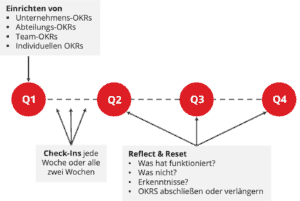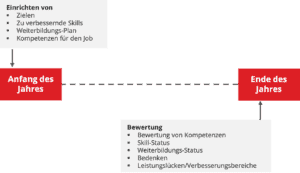
07 Jun OKRs and performance management – the difference
What is the difference between OKRs and performance management?
Looking at the widespread use of OKRs in today’s business world, it is clear how relevant the target management system is – just as it was over 40 years ago. In contrast, the role of performance management initiatives, such as annual performance reviews, is diminishing in many Fortune 500 companies. In today’s article, we present the differences between these two methods and how they can complement each other. In this article, we explain the difference between Objectives and Key Results and Performance Management.
Objectives and key results (OKRs)
OKRs, or Objectives and Key Results, are management methods that break down a company’s objectives into time-based, achievable actions (key results). They have increasingly become one of the most important ways for companies to organize teams by providing them with clear goals and a clear, actionable plan to achieve those goals. OKRs usually set targets on a quarterly basis, but can also use an annual cycle. You can find out more about the OKR methodology in this post.
Performance Management (PM)
Performance management, on the other hand, focuses on how employees perform in comparison to the requirements relevant to the job. These cycles are usually annual.
Let us now look at the differences between OKRs and performance management.
OKRs and performance management: focus on differences
OKRs focus on business results, while performance management focuses on how an employee performs their work.
Business orientation
Employee orientation
Business orientation
OKRs are business-oriented. In other words, they define what the company, a department, a team or an individual should do in a particular quarter. OKRs also define how they measure their performance along the way. The following applies: if the OKR owners achieve their objectives, the company as a whole is also expected to perform better. For example, in terms of customer satisfaction, sales, product quality, supplier satisfaction or any other factor that is important for the development of the company.
Employee orientation
Performance appraisals focus on a particular employee and the extent to which their skills and performance meet the job requirements. The focus is therefore on the employee. The content of such a discussion can be, for example, how the employee can perform their current work better, how they can reflect on their career aspirations or how they can be supported in their career path through coaching or training. The manager also identifies those who lack certain skills to perform their job. If there is no recognizable way in which the employee can be promoted or the workplace can be made suitable for the employee, it is up to the manager to discuss further steps, such as dismissal.
OKRs and performance management: a typical cycle
In contrast to performance management, OKRs have shorter cycles. Performance reviews, on the other hand, are generally very extensive and are usually carried out once a year.
Objectives and key results
Performance management
Assessment periods
Weekly, sometimes once every 2 weeks(check-ins).
Assessment periods
Once or twice a year.
How does a cycle begin?
- Company/department/team OCRs are defined at the beginning of each quarter
- Employees then create their individual OKRs and coordinate them with company/department/team OKRs
- Employees and managers discuss dependencies with other individuals/teams/departments and also record these in the OKRs
How does a cycle begin?
- The HR department starts the appraisal cycle
- Depending on the employee’s career level and activity, employees are assessed according to a series of competencies that reflect their work performance in the respective cycle
How does a cycle end?
- At the end of the quarter, teams/departments/employees meet to share their success in achieving the OKRs
- For each OKR, the teams/departments/employees assess where they are and whether it makes sense to complete the OKR or “stretch ” (extend) it to the next quarter
- In addition to the OKRs that are “stretched” to the next quarter, the teams/departments/employees create new OKRs at each level based on the company’s goals and vision
How does a cycle end?
- The employees carry out a self-assessment
- Colleagues also provide 360-degree feedback
- The manager evaluates the employee based on the defined competencies
- Manager and employee meet and talk about the evaluations
- The manager and employee then work out training options
- Finally, the manager and employee jointly define the goals for the next performance management period
Remuneration
In the software engineering department of Acmesoft Inc. John is committed to delivering 10 features for a release and has completed 8 of the 10 with excellent quality. Jacob is committed to delivering 4 features for the same version, but has completed 5 of them in excellent quality. Which of these two employees would you choose for your next project?
Objectives and Key Results
Performance management
OKRs encourage aggressive target selection and should therefore not be used as the sole factor in calculating compensation.
Since HR has become a business function, performance reviews and appraisals have been an important precursor to compensation reviews.
Transparency
Objectives and Key Results
OKRs promote transparency, which leads to a better error culture, as goals, successes and failures are visible to everyone.
Performance management
PM is a confidential process between managers and individual employees that remains largely unpublished.
Summary
We hope that this article has given you an insight into our day-to-day work with Objectives and Key Results and Performance Management. You can find many more articles on the subject of OKRs in our OKR expert magazine. Are you planning to introduce OKRs in your company? We will be happy to advise you!

